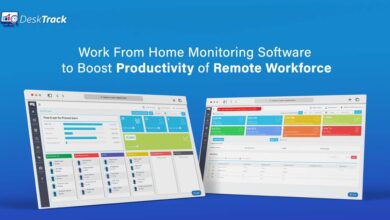Critical Components of a Comprehensive Facility Compliance Application
Ensuring healthcare facilities remain compliant with regulatory standards is a crucial aspect of maintaining operational integrity and patient safety. Leveraging healthcare compliance software can significantly streamline the process, reduce errors, and ensure that all necessary documentation is up-to-date and easily accessible. This article explores the critical components of a comprehensive facility compliance application, focusing on the role of healthcare compliance software in enhancing efficiency and accuracy.
Centralized Document Management
Organized Compliance Data
One of the essential features of a comprehensive facility compliance application is the ability to centralize all compliance-related documents. This includes Environment of Care (EOC) information, Life Safety, and Emergency Management plans. Centralizing these documents in a digital platform ensures they are organized, easily accessible, and less prone to being lost or damaged.
Automated Document Updates
Manual updates to compliance documentation can be tedious and error-prone. A robust healthcare compliance software automates the updating process, ensuring that all documents reflect the latest information and regulatory requirements. This automation minimizes the risk of errors and ensures continuous compliance.
Secure, Cloud-Based Storage
Always Available
Storing compliance documents in the cloud ensures they are always available, regardless of location. This accessibility is particularly beneficial during compliance surveys or emergency incidents when quick access to critical information is necessary.
Secure and Backed Up
Cloud storage also provides enhanced security and backup capabilities. Compliance documents stored digitally are protected against physical damage or loss, and regular backups ensure that data can be restored in case of any unexpected issues.
Mobile Access and Real-Time Updates
User-Friendly Mobile Tools
Healthcare compliance software with mobile capabilities allows facility managers and staff to access compliance documents on-the-go. This mobility ensures that critical information is available at all times, whether during daily operations or emergency situations.
Real-Time Building Updates
Facilities, especially hospitals, are dynamic environments with frequent changes and updates. Real-time updates to building and equipment information ensure that all stakeholders have the most current data, reducing the need for redundant trips to physical plan rooms and improving overall efficiency.
Automated Inspection Logs and Preventive Maintenance
Automated Logs
Automated inspection logs are a key feature of healthcare compliance software, ensuring that all inspections are recorded accurately and timely. This automation not only saves time but also ensures that logs are consistently maintained and readily available for compliance reviews.
Preventive Maintenance
Preventive maintenance is critical in avoiding equipment failures and ensuring patient safety. Healthcare compliance software can schedule and track preventive maintenance activities, ensuring that all equipment is regularly checked and maintained according to regulatory standards.
Emergency Preparedness and Action Plans
Centralized Action Plans
Hospitals and healthcare facilities must have action plans for various emergencies, such as fires, natural disasters, and other crises. A comprehensive facility compliance application centralizes these action plans, organizes them under appropriate compliance codes, and makes them easily accessible for both regular preparations and during actual emergencies.
Instant Access During Emergencies
During an emergency, instant access to critical information can save lives. Healthcare compliance software provides quick access to emergency action plans, equipment locations, and contact lists, ensuring that facility staff can respond effectively and efficiently.
Simplified Compliance Surveys
Smooth Surveys
Preparing for and undergoing compliance surveys can be stressful and time-consuming. A well-designed healthcare compliance software simplifies this process by ensuring that all necessary documents are organized, up-to-date, and easy to access. This preparedness can lead to smoother surveys and fewer compliance issues.
Electronic Sharing of Documents
The ability to share compliance documents electronically is another advantage of healthcare compliance software. During surveys or audits, documents can be quickly shared with inspectors, reducing the time spent on manual copying and distribution.
Conclusion
Incorporating a comprehensive facility compliance application is crucial for healthcare facilities aiming to maintain high standards of regulatory compliance and operational efficiency. Healthcare compliance software plays a vital role in this process by centralizing document management, providing secure cloud storage, enabling mobile access, automating inspection logs, and enhancing emergency preparedness. By leveraging these tools, healthcare facilities can ensure they are always prepared for compliance surveys, emergencies, and daily operations, ultimately contributing to better patient care and safety.



